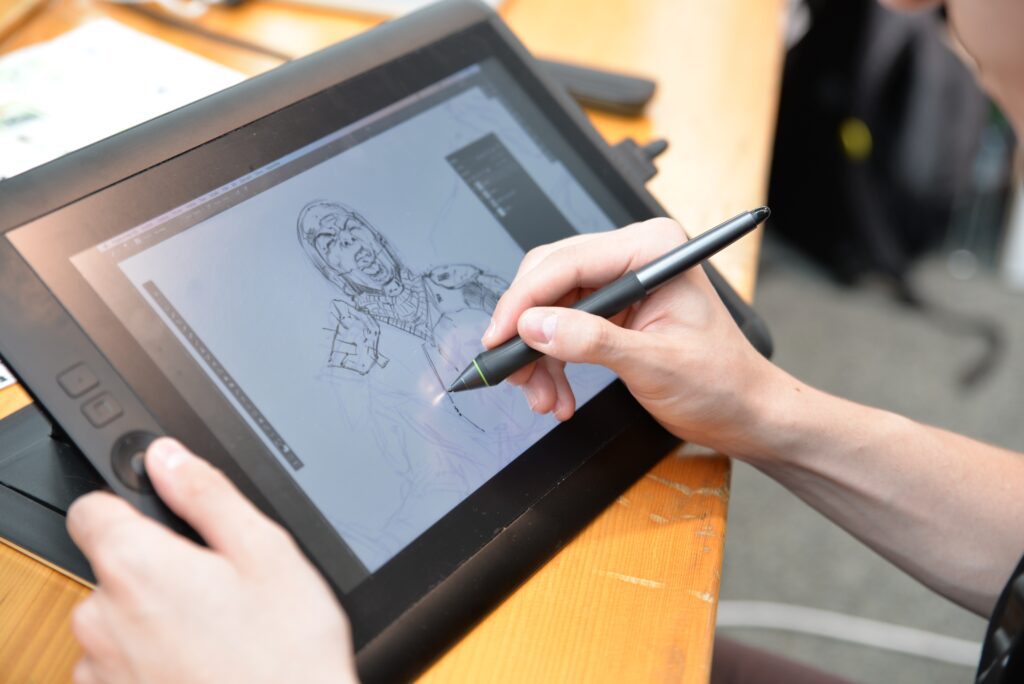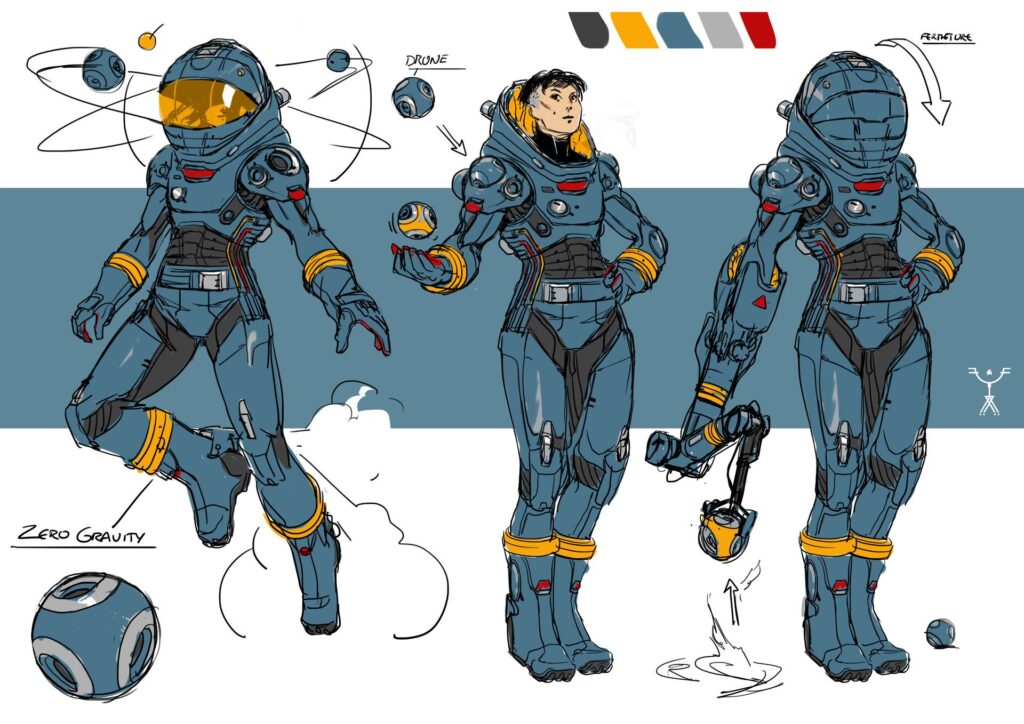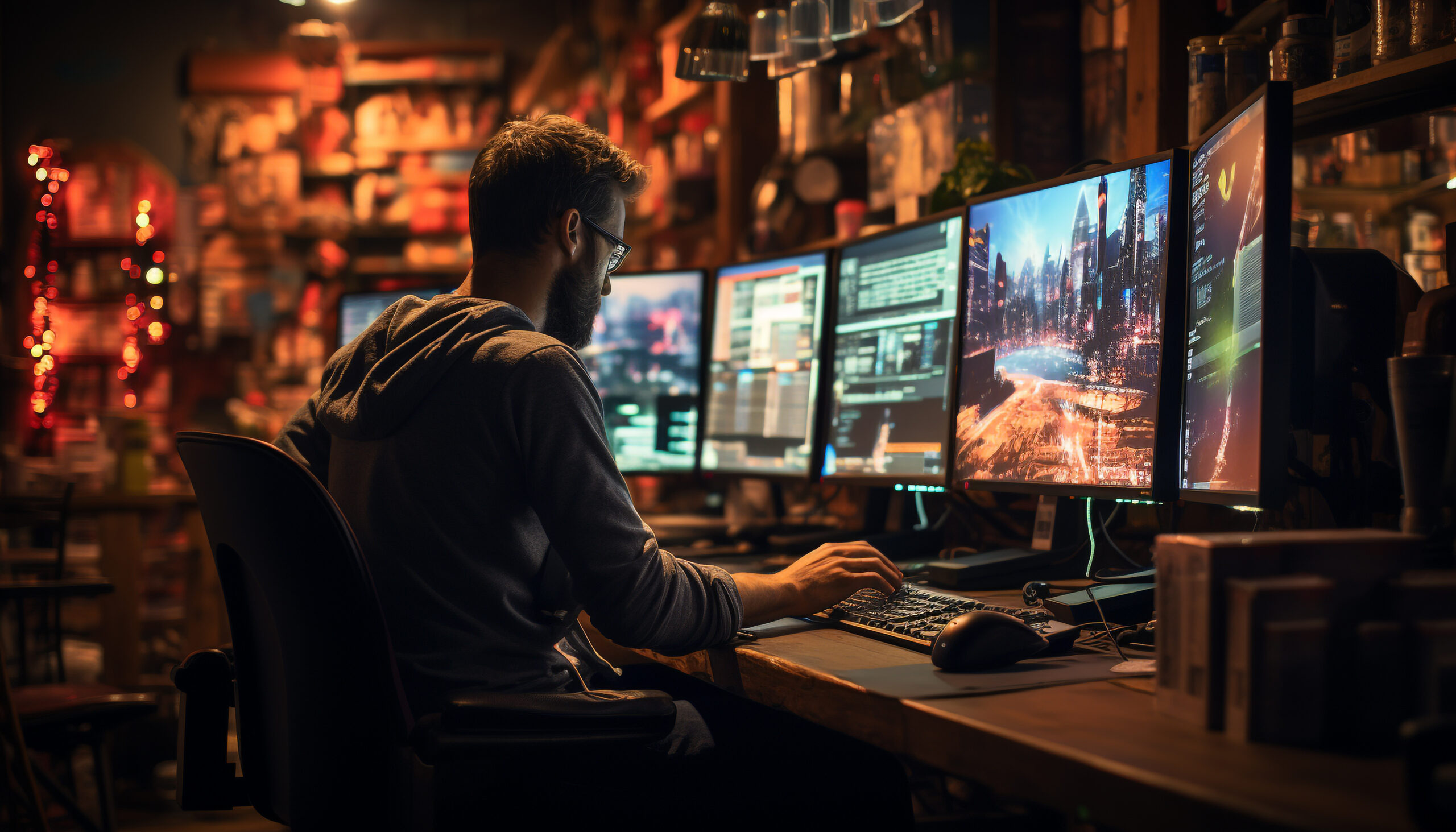In the world of video games, various professionals contribute their expertise to create immersive, visually stunning experiences. One of the most essential roles in this process is the game artist. But what is a game artist, exactly?
More importantly, what does a game artist do – and why are they so vital to the success of a video game? Well, don’t worry; in this article, we’ll explore what is a game artist, the different types of game artists, and the skills required to thrive in this creative and highly competitive field. So keep up!
Don’t miss: Game art vs game design: how different are they?
What is a game artist?

A game artist is basically responsible for creating the visual elements of a video game. This includes everything from characters and environments to textures, lighting, and visual effects.
Game artists work closely with game designers and developers to ensure that the visual aspects of a game align with its gameplay mechanics, story, and overall vision.
Game art is not just about making something look “good.” It plays a crucial role in enhancing the player’s immersion in the game world. The mood, tone, and atmosphere of a game are often communicated through its art.
Whether it’s a realistic, gritty war zone or a vibrant, cartoonish fantasy world, the art defines much of the player’s experience.
Learn more here: How to choose an art style for a game – all you need to know
The 6 types of game artists
There are several specializations within the field of game art, each with its own focus and set of responsibilities, and brings a different meaning to what is a game artist. Understanding these roles can help clarify the diverse skill sets that game artists bring to the table.
Concept artist
Concept artists are the visionaries behind the initial look of a game. They create sketches and designs that lay the foundation for the game’s characters, environments, and objects.
These early designs help establish the aesthetic direction for the entire game, and other artists build upon this foundation.
Concept artists must be highly creative, able to quickly sketch out multiple ideas, and have a strong understanding of the visual style the game is aiming for.
Character artist
As the name suggests, character artists are responsible for designing and modeling the characters that players will control or interact with while in the game. This involves not creating the character’s physical appearance and ensuring they fit into the game world’s lore and visual style.

Character artists often work with animators to ensure their designs are suitable for movement and gameplay mechanics. Mastery of anatomy, facial expressions, and movement is essential in this role.
Environment artist
Environment artists focus on creating the settings and backgrounds where the game’s action takes place. They design everything from sprawling landscapes and dense urban settings to interiors of buildings and other structures.
Environment artists must pay close attention to detail and use lighting, textures, and other visual elements to make these worlds feel alive and believable.
Texture artist
Texture artists add the surface details that make objects, characters, and environments look realistic or stylized. They create textures that simulate different materials, such as wood, metal, skin, or fabric.
These textures are applied to 3D models to bring them to life and ensure they look authentic within the game world. Texture artists must have a deep understanding of color theory, shading, and how different materials react to light.
UI/UX artist
The user interface (UI) and user experience (UX) are crucial aspects of game design, and UI/UX artists specialize in creating menus, icons, and other elements that players interact with.
Their work ensures that navigating through the game’s systems is intuitive and visually appealing. They focus on creating a seamless experience for the player, balancing aesthetics with functionality.
Visual effects (VFX) artist
VFX artists create dynamic, eye-catching effects such as explosions, magic spells, weather conditions, and particle effects. These artists use specialized software to simulate various visual phenomena and enhance the overall atmosphere of the game.
VFX artists are critical in making moments in the game feel impactful and memorable, contributing to the cinematic quality of modern video games.

Skills of a game artist
To thrive as a game artist, individuals need a blend of creativity, technical ability, and collaboration skills.
At its core, game art is about visual storytelling. Whether through sketches, digital painting, or 3D modeling, game artists must have strong foundational art skills.
This includes a deep understanding of anatomy, perspective, color theory, and composition, and that’s why many game artists start by developing their traditional art skills before transitioning to digital platforms.
Game artists also rely heavily on digital tools to create their work, and understanding how to use these tools effectively is essential for any aspiring game artist. Some of the most common software used in the industry include Adobe Photoshop, Unity, and Unreal Engine.
Game development is a highly collaborative process, and game artists must also know how to work closely with designers, animators, programmers, and other team members.
Strong communication skills are necessary to ensure that everyone is aligned on the game’s visual direction, and game artists often need to adapt their work based on feedback from the team, making flexibility and openness to critique vital traits.
But game art isn’t just about creating pretty pictures. It’s about solving creative and technical challenges to enhance gameplay.
For example, how can an environment artist make a large open world feel immersive without causing performance issues? Or, how can a character artist create a unique design that still fits within the limitations of the game engine?
Problem-solving is a significant part of the job, as game artists must balance creativity with technical constraints, which is often the most important aspect of what is a game artist.
Also read: 12 stunning video game art styles
The importance of game artists in the industry

Without game artists, video games would be devoid of the stunning visuals that make them so captivating. From the characters we control to the worlds we explore, every visual aspect of a game is carefully crafted by artists.
Their work directly impacts a player’s experience, influencing everything from emotional engagement to how easy a game is to play.
As the gaming industry continues to grow and evolve, the demand for skilled game artists remains strong. Whether you’re playing AAA titles with hyperrealistic graphics or an indie game with a unique, stylized art direction, the influence of game artists is undeniable.
So, what is a game artist? They are the creative force behind the visual elements of video games, responsible for bringing characters, environments, and effects to life.
We here at Main Leaf, in our 12 years of experience in the game development industry, know firsthand the importance of game artists and how pivotal they are to the industry.
Need help bringing your vision to life? Main Leaf offers a full range of game development and outsourcing services, from 3D character modeling and animation to mobile game development and everything in between.
Whether you’re a seasoned studio looking to boost your team’s capacity or an indie developer with a dream project, we’re here to help you reach your goals. Contact us now and let’s create something amazing together!

